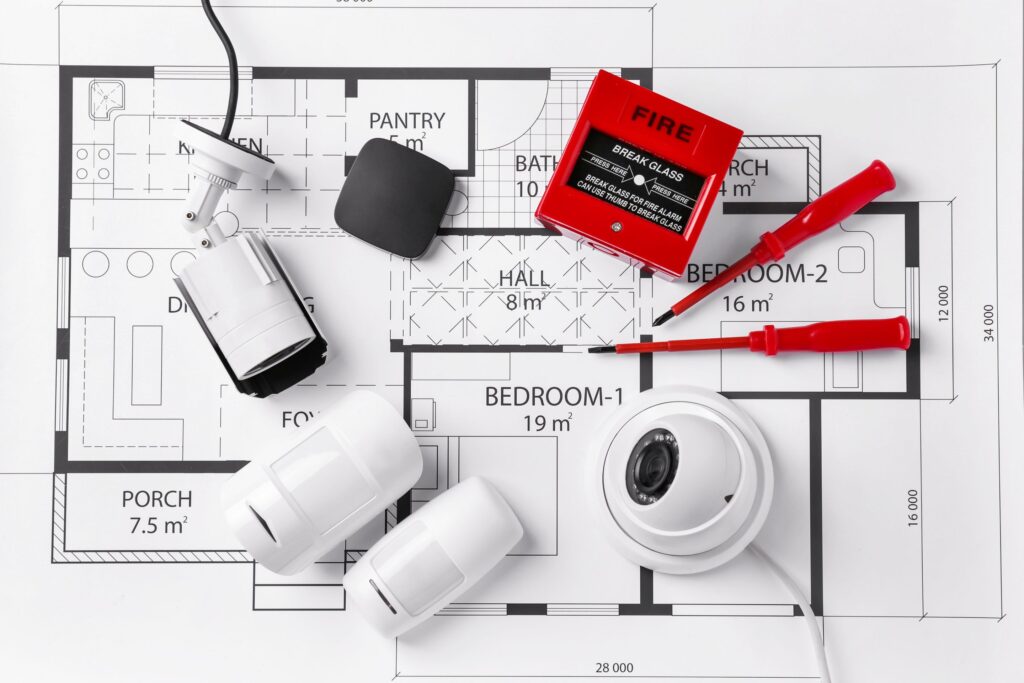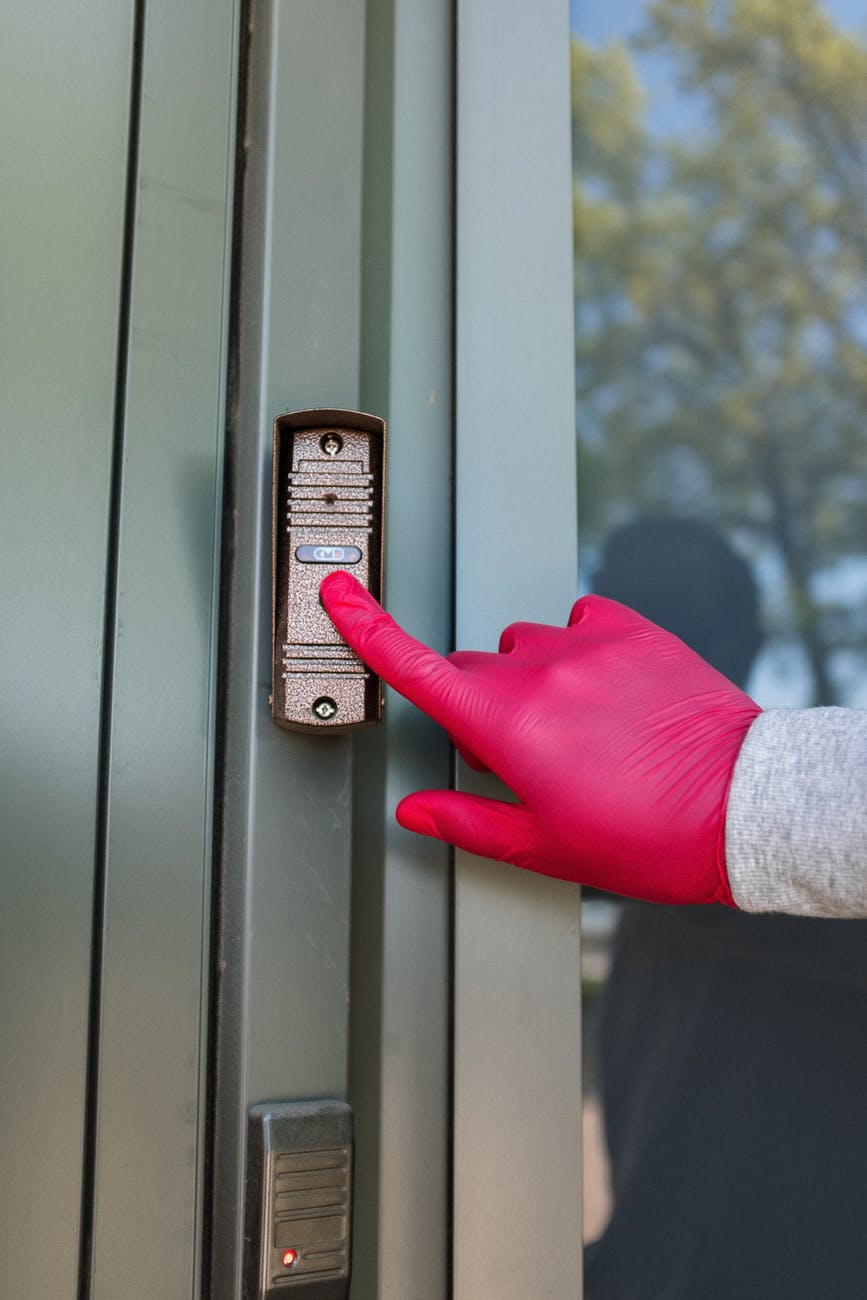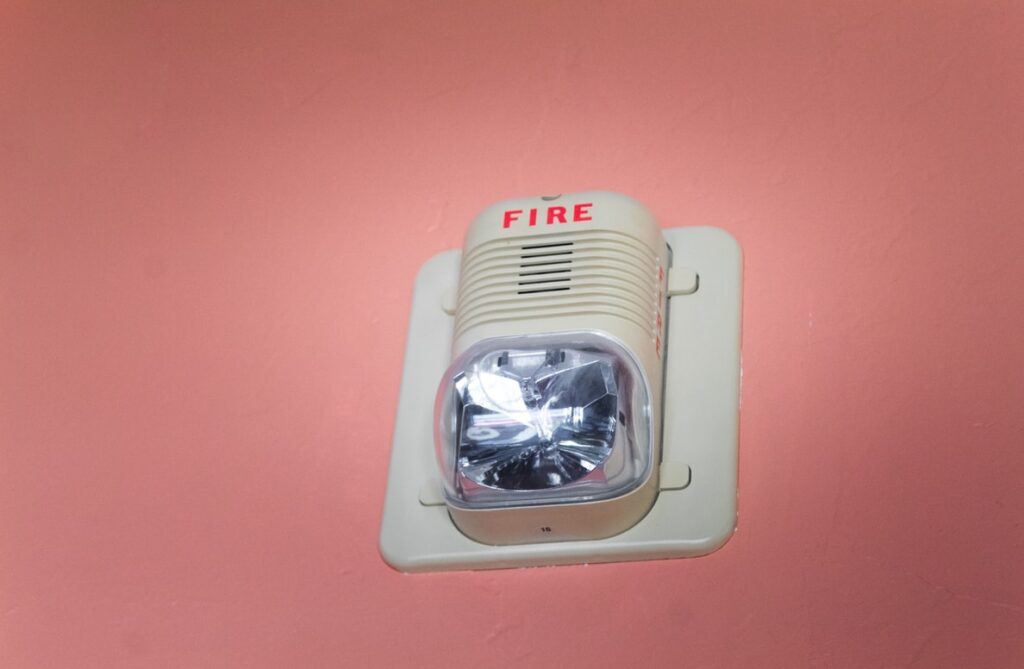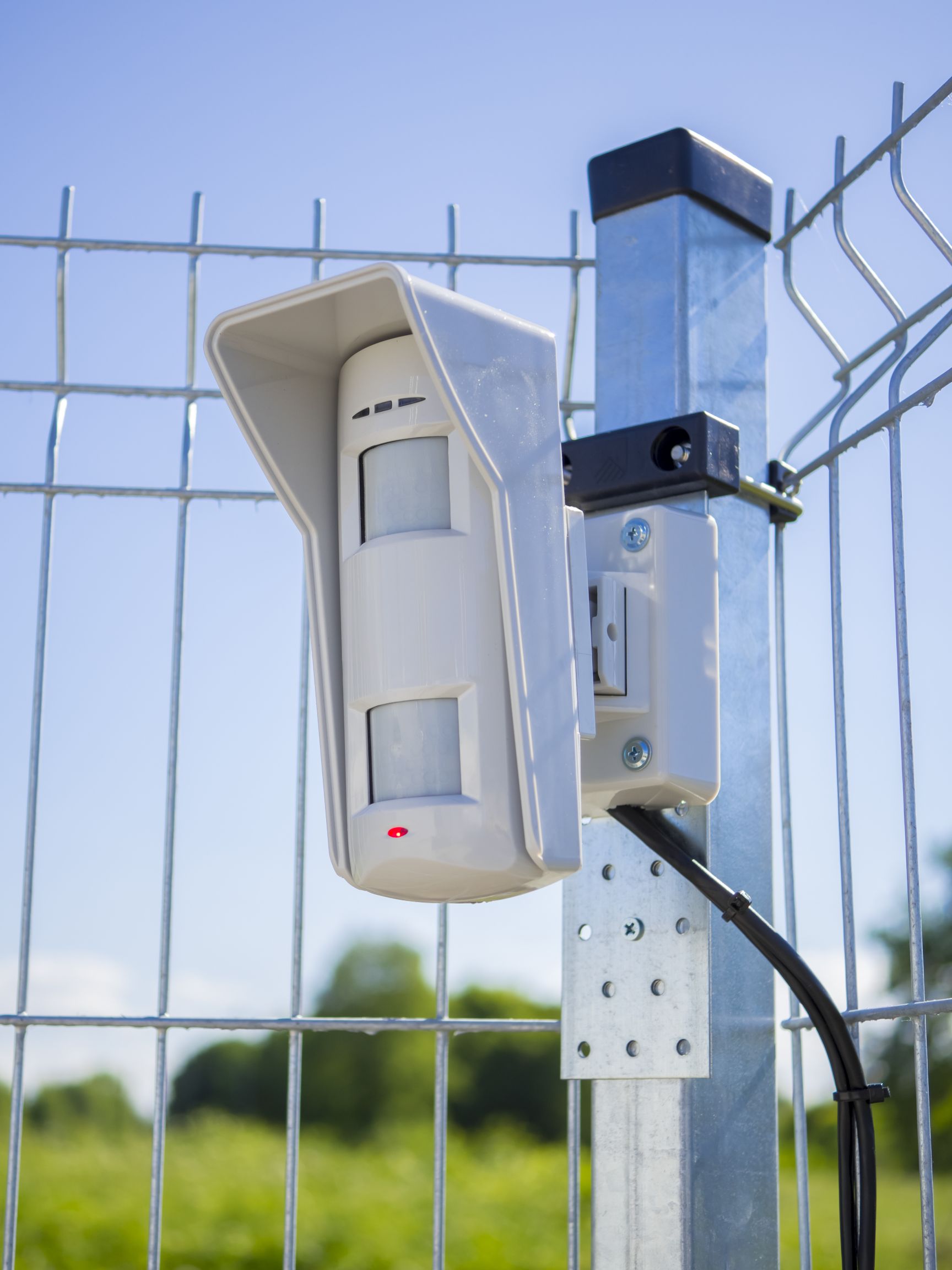How Do Security Systems Work
When protecting your home from burglars and other criminals, a network of devices can be highly effective. All security systems run on the same fundamental principle: safeguarding entry and exit points from violent intrusion. This principle applies to residential premises, commercial establishments, and other locations where you keep safe your assets. So, how do security systems work?

How Do Security Systems Work
As stated above, all home security systems operate on the same fundamental idea of protecting access points, like doors, windows, and interior space that may hold valuables such as art, computers, firearms, and coin collections, among other things. The only actual difference between a home’s size, the number of doors and windows it has, or the number of internal rooms it has decided to protect, is the number of security components installed throughout the home and monitored by the control panel.
A significant advancement in technology over the past decade powers home security systems. Most security systems now are wireless. Therefore, many of them can also be used as home automation systems, providing you with more value for your money.
Furthermore, owing to smartphones and touch-screen panels, they are now considerably more user-friendly. This article will guide you to understand how security systems function and what they do in this article. Specifically, we’ll look at how wireless systems differ from wired systems, which security alarm features are most significant, and the advantages of including cameras in your home security system. Using these technologies to keep you safer will be another topic we’ll be discussing.
Operation of a Home Security System
Having a home security system is essential for keeping your property and the people who live in it secure. Burglary, house invasion, fire, flood, or other natural calamities exemplify how others may bring about harm. The majority of home security systems can keep track of these things. In these systems, a collection of sensors connects with a central hub through radio frequencies or cables, which then communicates with the outside world via a cellular connection or, on occasion, a traditional landline. It is common to be a touch screen fixed on your wall or a compact box on a counter or cabinet.
They carefully place sensors around your house, including at access points such as doors and first-floor windows, as well as in corridors and high-traffic areas, to provide maximum protection. These sensors detect when a door or window is open or close. It can also see when someone moves about in your house or a combination of these events.
A tripped sensor on an active system will automatically send alerts to the central control unit. The hub then sounds an audio alarm, sends you a notification (by phone call, text message, or mobile app push notification). If you have professional monitoring, may notify a monitoring center as well.
In the case of professional monitoring, specially trained security business personnel follow the signals from your system and make repeated attempts to alert you and the appropriate authorities in the event of a possible danger. All professionally installed security systems are subject to professional monitoring contracts for a period of up to three years after their installation. Most DIY plans provide you the option of hiring professional monitoring services without having to commit to a long-term contract.
Most Popular Security Alarm Features
Today, most home security systems are wireless, which means they don’t need a landline or any electrical work for installation. Here is a list of the most popular security alarm features, along with an explanation of what each one does:
Control Panel
The control panel is what we call the hub.
The heart of the security system is in the control panel. It communicates with your security sensors, with you, and with the monitoring center via the use of radio transmissions. The majority of plans include a built-in keypad or manually arming and disarming the device.
Key Fob and Keypad are Optional
These are other methods of arming and disarming the system. Keypads are the most commonly used and incorporated into the system’s hub, but you may purchase extra keypads if you have more than one external door on your property. With an intelligent wireless system, you may also control the alarm by using an app on your smartphone.
Contact Sensors in a Variety of Applications
A compact, battery-operated gadget made of plastic with a sensor is attached to one side of a door or window, and the magnet is attached to the other. A signal is sent to the central control unit (hub) when an open door or window disrupts the contact between the sensor and the magnetic portion.
Sensors that Detect Movement
If you have a significant number of visitors visiting your house, this somewhat larger plastic, battery-powered gadgets are often put up high to cover the regions that they must pass through. These mainly rely on a technique known as passive infrared, which detects movement by measuring the heat generated by the body.
Glass-Break Sensors
A glass-break sensor is a device that listens for the sound of shattered glass and ranges around 25 feet in most cases. Motion sensors might be problematic in houses with big animals that may set off the sensors. A glass-break sensor is an excellent secondary measure for windows and sliding glass doors since a burglar can bypass a contact sensor if it shatters a window and then climbs through it to gain access to your home. Contact sensors are the most common secondary measure for windows and sliding glass doors.
Sirens with a high decibel level
However, although today’s wireless technologies provide a variety of sophisticated methods of deterring criminals, there’s nothing quite like a sound old-fashioned blaring alarm to notify you and your neighbors of the presence of a possible threat.
Adding an interior siren with all home security systems is a good idea. The majority of hubs already have sirens integrated into their system, while several of them allow for the addition of an external siren. A typical noise level is between 80 and 115 dB while operating.
A Yard Sign and Stickers
Home security systems come preinstalled with brightly colored indicators announcing their presence. These signals serve as your first line of protection. Most criminals will not even try to break in if they spot them and instead flee.
Cameras
Even though many home security systems do not include surveillance cameras, according to security company representatives we talked with, they are the most popular add-on. The most prevalent sort of doorbell camera is a video doorbell camera.
The motion detectors may be connected to your home security system using your existing doorbell wiring or wirelessly over Wi-Fi. They will send you an alert if there is movement at your front door. Some doorbell cameras can even detect an item delivered. Outdoor weatherproof cameras are also popular. Batteries power some outdoor cameras and even feature solar panels, eliminating recharging the camera. Indoor cameras are also a part of many home security systems, albeit less common than outside cameras due to privacy invasion worries.
Most security cameras can detect motion and send alarms regardless of their location. Some cameras are capable of detecting specific individuals, and a few even have face recognition capabilities. Depending on how much storage space is available, cameras may record video constantly or just when it detects motion. Video is kept locally on a hard drive or in the cloud monthly, depending on selected options.
Sensors for the Environment
Sensors that detect smoke, heat, carbon monoxide, water, and temperature can safeguard you and your property from various hazards like fire, frozen pipes, and gas poisoning, among other things. On the other hand, these sensors are optional with most security systems. It is important to note that some DIY methods do not provide expert monitoring of environmental sensors, so be careful to verify if this is something you need.

Operation of a Wireless Home Security System
A wireless alarm system can function by using wireless communication protocols such as Zigbee or Z-Wave, or even a company’s own proprietary radio protocol, to enable the sensors you install throughout your house to communicate with the central hub. After then, the control unit takes advantage of a cellular connection to interact with devices outside the home.
Even though hard-wired systems necessitate drilling and electrical expertise because all sensors connect to a central hub, wireless communication technology is ubiquitous in home security systems. More and more businesses are shunning wired phone systems, much fewer ones that rely on landlines. Therefore hard-wired systems are becoming an increasingly infrequent occurrence, unfortunately.
The most widely used protocol is Z-Wave. Almost all major alarm businesses use Z-Wave – both DIY and professional installation – in some form or another. Because it is very secure and consumes very little power, battery-powered sensors may operate for months or even years on a single charge. That is why it is one of its primary benefits.
Devices that use Z-Wave technology have a fair range on their own. When they work together on a mesh network, capacity may increase to up to 600 feet. Furthermore, all Z-Wave devices must be backward compatible with existing Z-Wave networks. As a result, your older sensors will always be consistent with newer ones, allowing you to future-proof your home security system.
Features That Contribute to the Effectiveness of Your Wireless Home Security System
Our enhanced skills enable us to assist you in keeping your house as safe as possible. Devices and new software generate additional data points, which enhances the security of your wireless system.
These enhanced capabilities include the following:
Detecting Motion
It triggers the sensor when something enters the tracking zone of a motion sensor. The security system will strategically deploy sensors around your home, covering each area. The motion then initiates a response, such as a security light turning on or a camera recording – all over your wireless connection.
With customizable settings, you can configure your security system to alert you when it’s time to keep an eye out. Concentrate on the house, the yard, or all of the above.
Capabilities for Wi-Fi
Your Wi-Fi connection serves as the backbone of your wireless security system. It connects components and enables them to communicate when they are most needed. Cameras are connected to your private internet connection in your home and configured into your security interface.
Utilize wireless components to create a flexible and effective security force.
Remote Observation
You’ll be notified via smartphone or email if there has been a security breach at your residence. Rapid access to the relevant footage — from any location. Connect to your house’s indoor or outdoor cameras and monitor what’s going on. Homeowners can monitor and check on their property in real-time with our smartphone app.
Save the clip for future use or delete it once you consider the motion as harmless. By conducting a security audit of your house from nearly any location, you may obtain immediate responses. Also a head starts on any measures to keep your property safe.
Cloud-Based Storage
It’s a safe and secure data storage alternative that can help strengthen your wireless defense. As a homeowner, you will occasionally need to preserve surveillance footage for safekeeping.
Is it possible to install security systems in apartment buildings?
Almost all apartment complexes have a security system, such as an intercom system at the main door. If, on the other hand, your particular apartment does not already have a burglar alarm system installed, you have every right to invest in securing your property.
In an apartment, both professionally installed systems and do-it-yourself systems are acceptable. Check your lease to discover whether drilling holes in the walls may result in the forfeiture of your security deposit. If you cannot drill holes, you may use tape or other non-invasive mounting alternatives to hold the item in place. More minor permanent installation procedures also make it simpler to transfer these systems if you decide to do so.
DIY systems are a fantastic match for smaller apartments since there is less area to protect. As a result, the equipment and experience required to put everything up correctly are less. In addition,
signing a multi-year contract is unnecessary as you would be with professionally installed systems.
A permit is a requirement in installing a home security system.
If you want to install a home security system and have it professionally monitored, you may be required to get permission from your local government. This need varies from jurisdiction to jurisdiction, so be careful to verify local legislation. However, if you have a loud siren that might cause someone to contact the police and you cannot present a permit, you could be held liable for a false alarm if you do not possess the required paperwork. When securing a license, make sure to contact your alarm provider and provide them with your permit number after you have received it. When a police agency receives an alarm call, they may ask the monitoring station to provide the permit number before responding.

